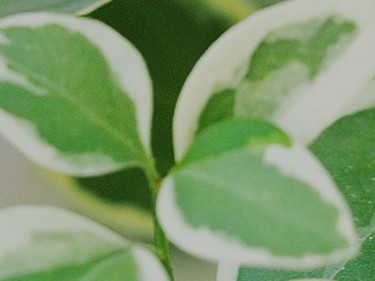If you live in a rural area, or on the rural/urban interface, can face dangers from wildfires. You can reduce these dangers by managing the vegetation around your home.
- Fuel is the only component of fire that can be altered to reduce the probability of damage from wildfires.
- The replacement of high flammability species with lower flammability species can reduce fire hazard and help create a defensible space around your home that allows heat and embers to dissipate.
- Low flammability species can also be positioned to break up flammable landscapes, provide a buffer zone bordering urban areas, or to reduce fire hazard in the immediate vicinity of individual properties.
Planting less
- The best way to protect your house is to reduce the intensity of the fire as it approaches; this can be achieved by creating an area around your house where all flammable material such as scrub vegetation, long, rank grass, leaves and twigs has been removed.
- The flammability of vegetation affects fire intensity, which has a major influence on fire control and the chance of homes being damaged or destroyed by fire.
- High flammability fuels have characteristics which greatly assist fire spread; for example, heavy fuel loads, continuous structure, volatile oils, or low moisture contents.
Flammability classes of plants
These flammability classes are intended as a guide only. Species flammability also varies as a result of genetic and environmental factors, so that the flammability of a particular species will depend on age and situation. For example, flammability may increase as a result of drought or other critical fire weather conditions, or mature vegetation could carry greater amounts of dead material, adding to the potential severity of any fire.
Low
Suitable for green breaks or defensible space, but when in the immediate vicinity or structures, there should be at least 3-4m break between the crowns to reduce fuel continuity.
Low/Moderate
Not recommended for planting in green breaks. If planted in defensible space, elevated dead material and litter should be removed regularly, greater than 4 m should be left between tree crowns, and trees or shrubs in this category should not be within 10 m of structures.
Moderate
Most of these species produce heavy accumulations of flammable litter and elevated dead material, and/or have flammable green foliage. Not recommended for green breaks or for planting in defensible space.
Moderate/High
Species may have flammable green foliage and/or produce high levels of litter and elevated fuel. Not recommended for green breaks or defensible space.
High
Burn readily at Low/Moderate forest fire danger conditions.
Low flammability species
| Fuchsia excorticata | Kotukutuku |
| Pseudopanax crassiofolius |
Horoekea/Lancewood |
| Pseudopanax arboreus | Five finger |
| Coprosma robusta | Karamu |
| Coprosma grandifolia | Raurekau/Kanono |
| Geniostoma ligustrifolium | Hangehange |
| Coprosma australis | Raurekau |
| Coprosma repens | Taupata |
| Carpodetus serratus | Putaputaweta |
| Corynocarpus laevigatus | Karaka |
| Griselinia littoralis | Papauma/Broadleaf |
| Griselinia lucida | Puka |
| Macropiper excelsum | Kawakawa/Peppertree |
| Solanum aviculare | Poroporo |
Low/moderate flammability species
| Hebe salicifolia and H. stricta | Koromiko |
| Melicytus lanceolatus | Mahoe/Whiteywood |
| Aristotelia serrata | Mako-mako/Wineberry |
| Coriaria arborea | Tutu |
| Myoporum laetum | Ngaio |
| Pittosporum crassifolium | Karo |
| Pittosporum eugenioides | Tarata/Lemonwood |
| Hoheria spp | Hoheria/Lacebark |
| Knightia excelsa | Rewarewa |
| Nothofagus menziesii | Tawhai/Silver beech |
| Phyllocladus glaucus | Toatoa |
| Plagianthus regius | Manatu/Ribbonwood |
| Weinmannia racemose | Kamahi |
Moderate flammability species
| Beilschmiedia tawa | Tawa |
| Cordyline australis | Ti kouka/Cabbage tree |
| Pittosporum tenuifolium | Kohuhu |
| Dacrydium cupressinum | Rimu |
| Metrosideros umbellate | Southern rata |
| Agathis australis | Kauri |
| Phormium spp. | Flax |
| Podocarpus dacrydioides | Kahikatea/White pine |
| Weinmannia silvicola | Tawhero/Towhai |
Moderate/High flammability species
| Podocarpus totara | Totara |
| Dodonaea viscosa | Ake-ake |
| Cyathea and Dicksonia spp. | Tree ferns |
| Cyathodes fasciculate | Mingimingi |
High flammability species
| Kunzea ericoides | Kanuka |
| Leptospermum scoparium | Manuka |
For further information
- On which species to grow best in your area, contact your local nursery.
- Protecting your property from fire, contact your local Fire and Emergency office,
- Research into fire behaviour and fuel (vegetation) types, contact Scion Rural Fire Research














